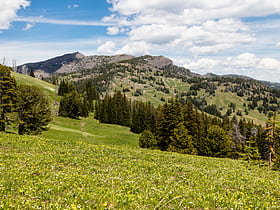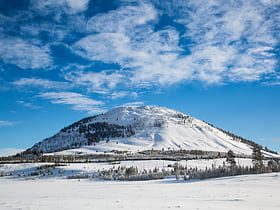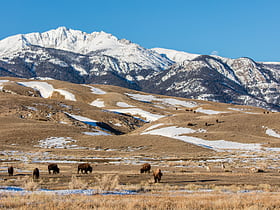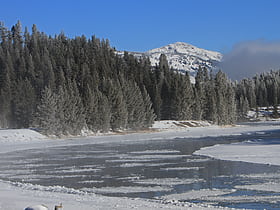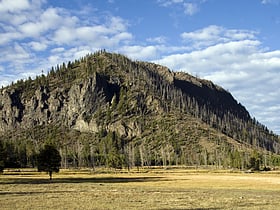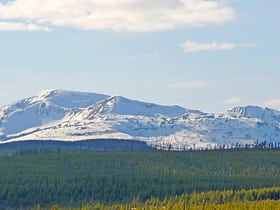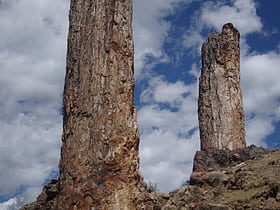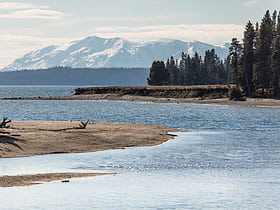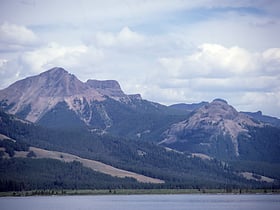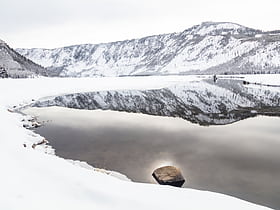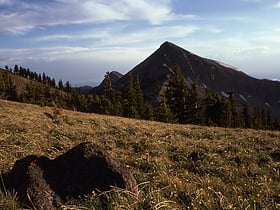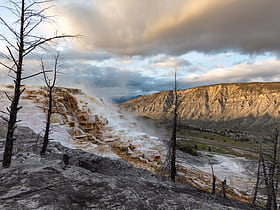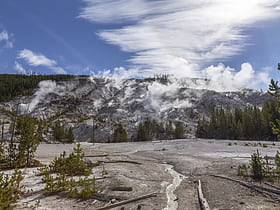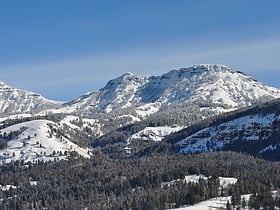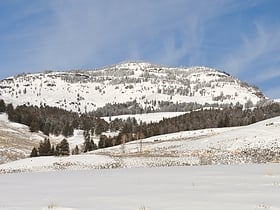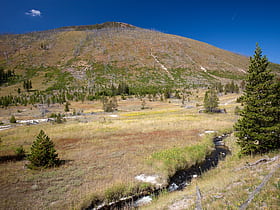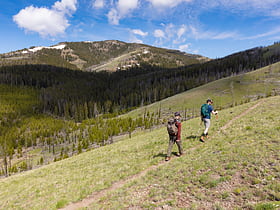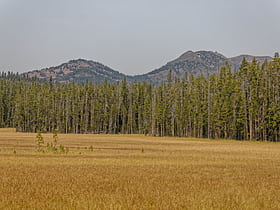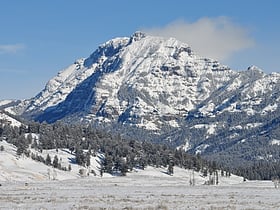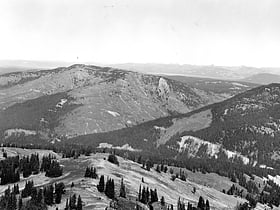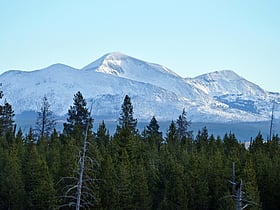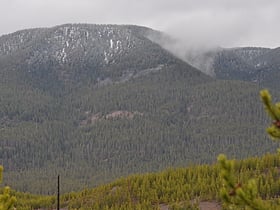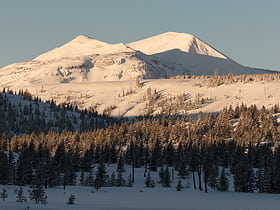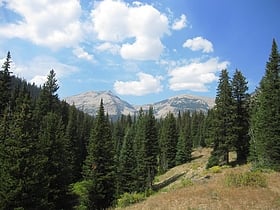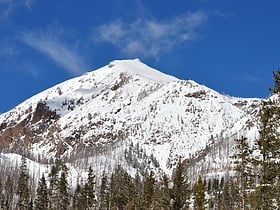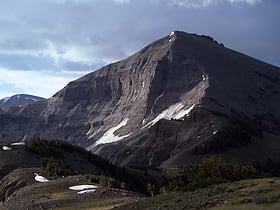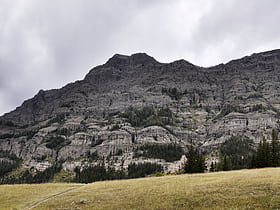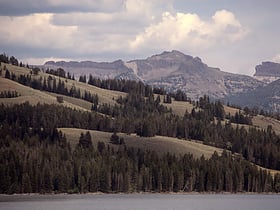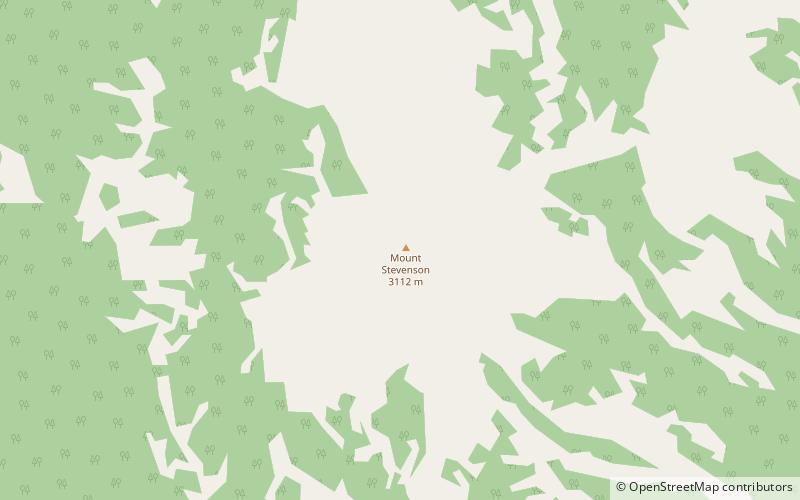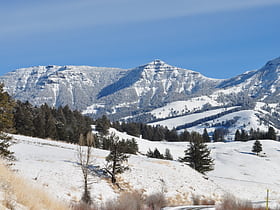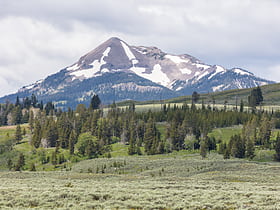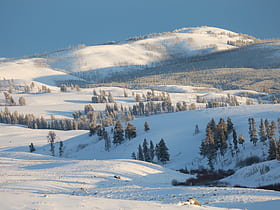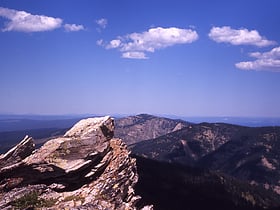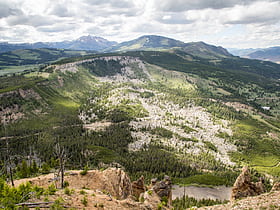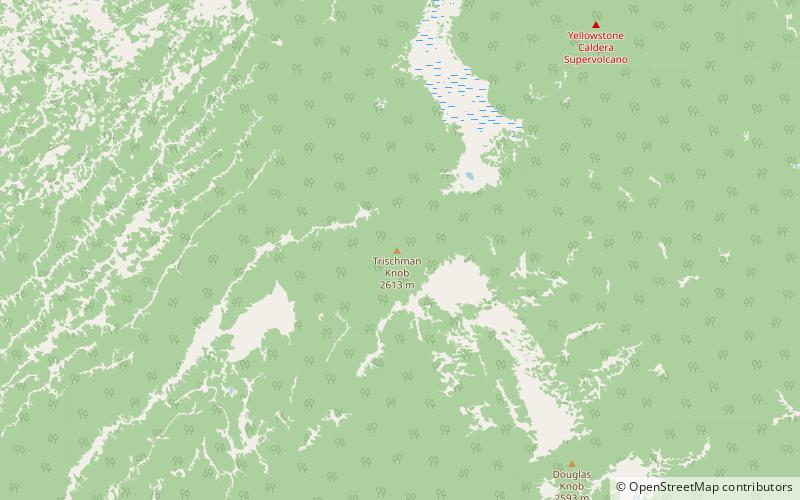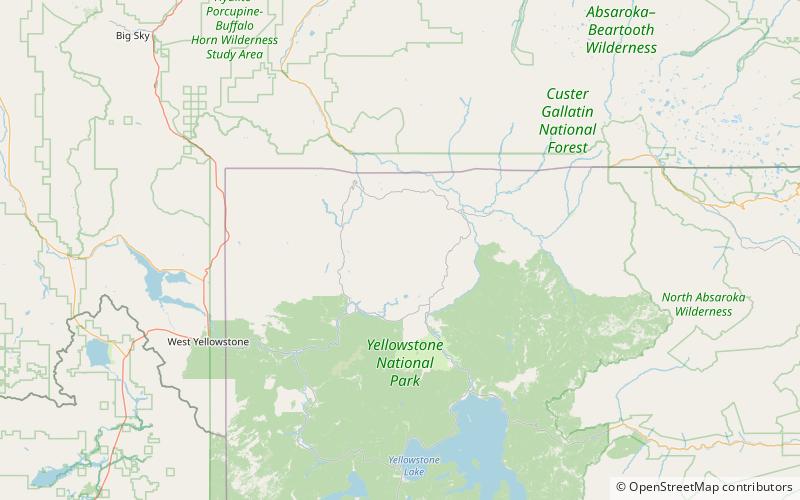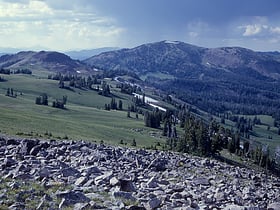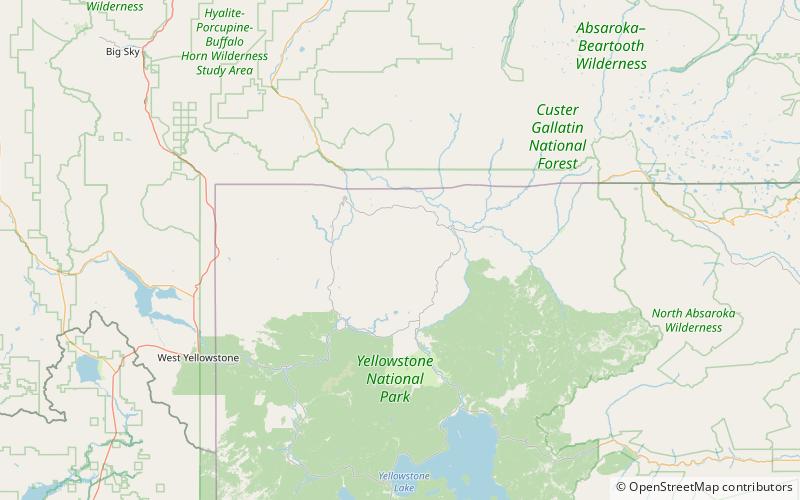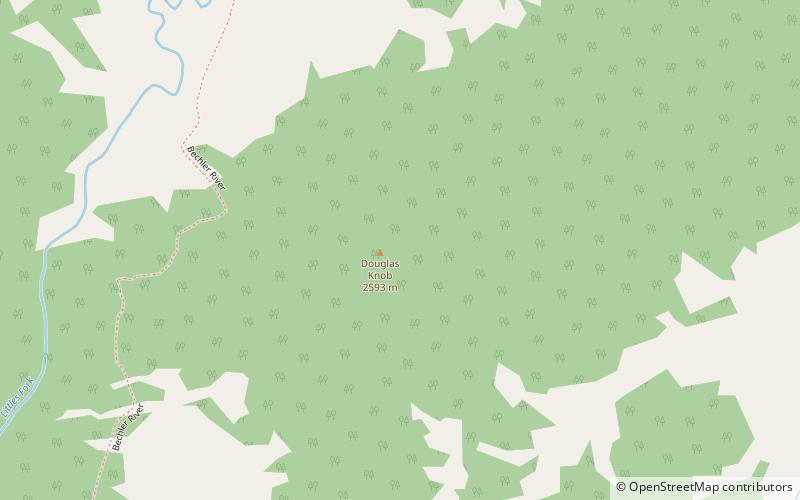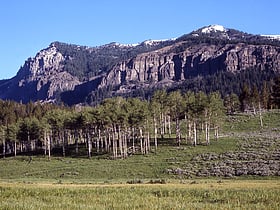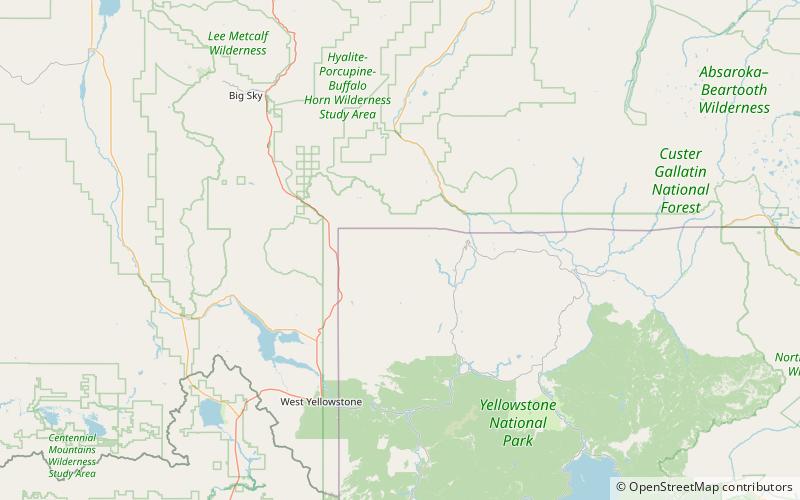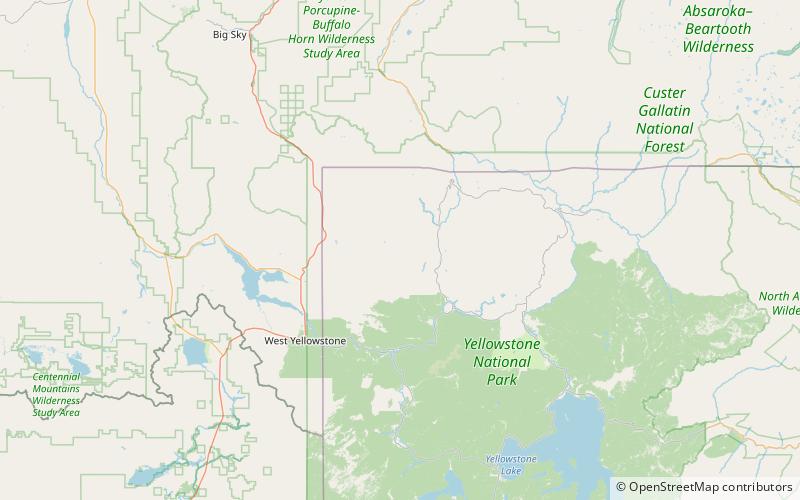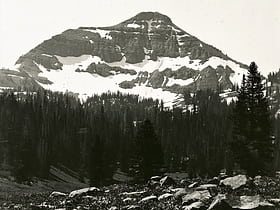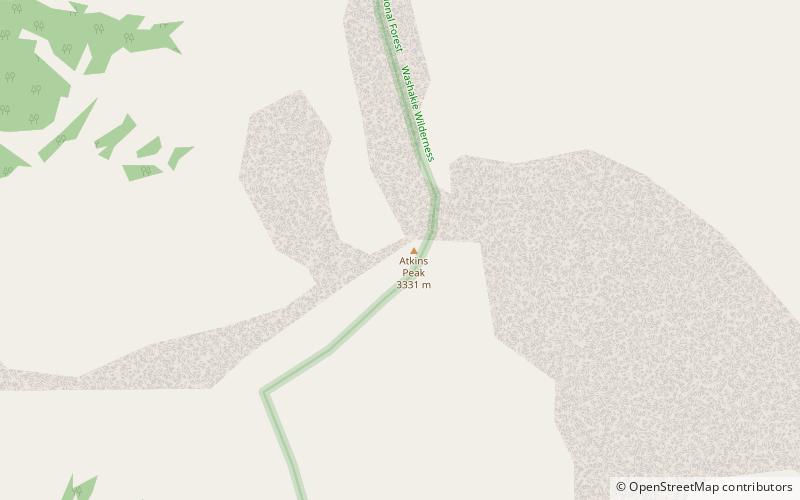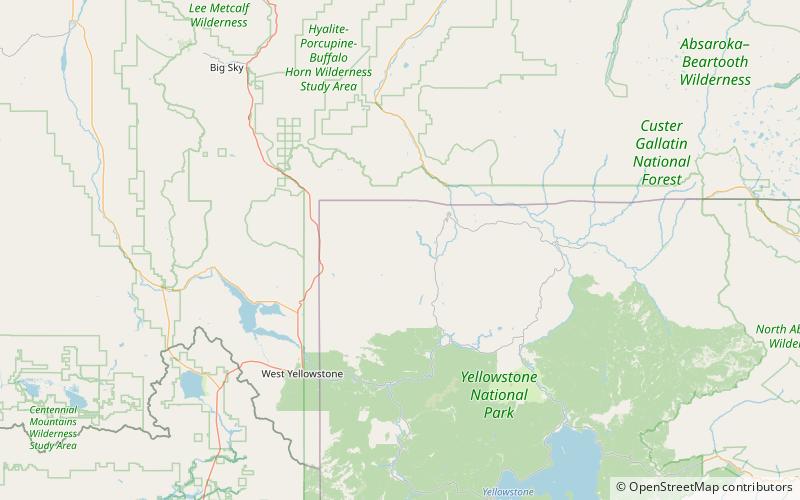Yellowstone National Park: Mountain
Places and attractions in the Mountain category
Categories
- Natural attraction
- Nature
- Hot springs
- Mountain
- Park
- Geyser
- Waterfall
- Lake
- Hiking trail
- Outdoor activities
- View point
- Nature and wildlife
- Bridge
- National park
- Museum
- Geologic formation
- Volcano
Mount Washburn
Hiking standby with a fire lookout Mount Washburn, elevation 10,219 feet, is a prominent mountain peak in the Washburn Range in Yellowstone National Park, Wyoming. The peak was named in 1870 to honor Henry D. Washburn, leader of the Washburn–Langford–Doane Expedition. The Washburn Range is one of two mountains ranges completely within the boundaries of Yellowstone.
Bunsen Peak
Bunsen Peak el. 8,564 feet is a prominent peak due south of Mammoth Hot Springs in Yellowstone National Park, Wyoming. The peak lies on the east flank of Kingman Pass on the Mammoth to Norris section of the Grand Loop Road.
Electric Peak
Electric Peak is the tallest mountain in the Gallatin Range of southern Montana, close to the Wyoming border and rises to an altitude of 10,969 feet.
Dunraven Peak
Dunraven Peak el. 9,869 feet is a mountain peak in the Washburn Range of Yellowstone National Park. In 1874, just two years after the park's creation, The 4th Earl of Dunraven and Mount-Earl, an Anglo-Irish peer, made a visit to Yellowstone in conjunction with a hunting expedition led by Texas Jack Omohundro to the Northern Rockies.
National Park Mountain
National Park Mountain is in Yellowstone National Park in the U.S. state of Wyoming. National Park Mountain rises above the confluence of the Firehole River and the Madison River and is just west of Madison Junction.
Mount Holmes
Mount Holmes is a prominent mountain peak in Yellowstone National Park. It is the tallest mountain in the Wyoming portion of the Gallatin Range.
Amethyst Mountain
Amethyst Mountain, el. 9,609 feet is the highest peak and central part of a northwest – southeast trending ridge that lies between the Lamar River to the northeast and Deep Creek to the southwest within Park County, Wyoming.
Mount Sheridan
Mount Sheridan el. 10,313 feet is a prominent mountain peak overlooking Heart Lake in the Red Mountains of Yellowstone National Park. The peak is named in honor of General Philip H. Sheridan, U.S. Army, one of the early protectors of the park.
Colter Peak
Colter Peak el. 10,640 feet is a mountain peak in the Absaroka Range in the southeastern section of Yellowstone National Park. The peak is named for mountain man John Colter, reputedly the first white man to visit the Yellowstone region.
Mount Haynes
Mount Haynes el. 8,218 feet is a prominent peak adjacent to the Madison River in Yellowstone National Park. The peak was named by then Yellowstone superintendent Horace Albright to honor Frank Jay Haynes, the first official photographer of the park.
Mount Doane
Mount Doane el. 10,551 feet is a mountain peak in the Absaroka Range in Yellowstone National Park. The peak is named for Lieutenant Gustavus Cheyney Doane, a U.S.
Mount Everts
Mount Everts, elevation 7,846 feet, is a prominent mountain peak in Yellowstone National Park, Wyoming, near Mammoth Hot Springs. The peak was named for Truman C. Everts, a member of the Washburn–Langford–Doane Expedition of 1870. Mount Everts is located immediately due south of Gardiner, Montana and due east of Mammoth Hot Springs.
Roaring Mountain
Roaring Mountain is in Yellowstone National Park in the U.S. state of Wyoming. Roaring Mountain was named for the numerous fumaroles on the western slope of the peak which during the early 1900s were loud enough to be heard for several miles.
Mount Norris
Mount Norris, elevation 9,842 feet, is a mountain peak in the northeast section of Yellowstone National Park in the Absaroka Range of the U.S. state of Wyoming.
Druid Peak
Druid Peak is a moderate domed peak on the southern flank of the Absaroka Range in Yellowstone National Park. The peak lies just north of the Lamar River and Soda Butte Creek confluence at the head of the Lamar Valley.
Factory Hill
Factory Hill el. 9,527 feet is a mountain peak in the Red Mountains of Yellowstone National Park. It is directly north of Mount Sheridan and west of the Heart Lake Geyser Basin.
Sepulcher Mountain
Sepulcher Mountain, elevation 9,642 feet, is a moderate mountain peak in northwest Yellowstone National Park halfway between the summit of Electric Peak and Mammoth Hot Springs. The peak was named Sepulcher by U.S. Army Captain John W.
Hedges Peak
Hedges Peak, elevation 9,669 feet, is a mountain peak in the Washburn Range in Yellowstone National Park, in the U.S. state of Wyoming.
Abiathar Peak
Abiathar Peak is a mountain peak with an elevation of 10,928 feet in the northeastern section of Yellowstone National Park, in the Absaroka Range of the U.S. state of Wyoming.
Barlow Peak
Barlow Peak, elevation 9,609 feet, is an isolated mountain peak in the Big Game Ridge section of southwest Yellowstone National Park, south of the Continental Divide, in the U.S. state of Wyoming.
White Peaks
White Peaks el. 9,472 feet is a small group of mountain peaks in the southern section of the Gallatin Range in Yellowstone National Park.
Purple Mountain
Purple Mountain, elevation 8,392 feet, is a mountain peak in the southern section of the Gallatin Range in Yellowstone National Park, in the U.S. state of Montana. The Purple Mountain Trail ascends to the summit from Madison Junction.
Trilobite Point
Trilobite Point is a mountain peak in the southern section of the Gallatin Range in Yellowstone National Park. It has an elevation of 10,010 feet.
Bannock Peak
Bannock Peak is a mountain peak in the southern section of the Gallatin Range in Yellowstone National Park, in the U.S. state of Montana. It has an elevation of 10,292 feet.
Meridian Peak
Meridian Peak is a mountain in the Absaroka Range in the state of Montana, United States. It has an elevation of 10,466 feet and is located in Park County, Montana. The mountain is included in Yellowstone National Park.
Mount Langford
Mount Langford el. 10,623 feet is a mountain peak in the Absaroka Range in Yellowstone National Park. The peak is named for Nathaniel P.
Barronette Peak
Barronette Peak, elevation 10,354 feet, is a mountain peak in the Absaroka Range, in the northeast section of Yellowstone National Park. The peak is named for Collins Jack Baronette.
Mount Schurz
Mount Schurz el. 11,007 feet is a mountain peak in the Absaroka Range in Yellowstone National Park. Mount Schurz is the second highest peak in Yellowstone. The mountain was originally named Mount Doane by Henry D. Washburn during the Washburn–Langford–Doane Expedition in 1871.
Mount Stevenson
Mount Stevenson el. 10,230 feet is a mountain peak in the Absaroka Range of Yellowstone National Park. Mount Stevenson was named in 1871 by geologist Ferdinand Hayden during the Hayden Geological Survey of 1871 for his friend and chief assistant, James Stevenson.
The Thunderer
The Thunderer el. 10,558 feet is a mountain peak in the northeast section of Yellowstone National Park, in the Absaroka Range of the U.S. state of Wyoming.
Antler Peak
Antler Peak, el. 10,063 feet is a prominent mountain peak in the Gallatin Range in Yellowstone National Park. The peak was originally named Bell's Peak in honor of an Assistant Secretary of the Interior by either Philetus Norris, the second park superintendent or W.H.Holmes, a U.S.
Prospect Peak
Prospect Peak el. 9,527 feet is a mountain peak in the Washburn Range of Yellowstone National Park. The summit is located approximately 6 miles west southwest of Tower Junction.
Mount Hancock
Mount Hancock el. 10,223 feet is an isolated mountain peak on Big Game Ridge in Yellowstone National Park. Captain John W. Barlow named the peak in honor of General Winfield Scott Hancock during the Barlow-Heap Exploration of Yellowstone in 1871.
Terrace Mountain
Terrace Mountain is a mountain peak in the Gallatin Range in Yellowstone National Park in Park County, Wyoming, United States. The mountain is located 2.2 miles southwest of Mammoth Hot Springs.
Trischman Knob
Trischman Knob el. 8,573 feet is an isolated summit along the Continental Divide on the Madison Plateau in Yellowstone National Park.
Cook Peak
Cook Peak, elevation 9,754 feet, is a mountain peak in the Washburn Range of Yellowstone National Park. The peak was named in 1922 by then-superintendent Horace Albright to honor Charles W.
Gray Peak
Gray Peak el. 10,298 feet is a prominent mountain peak in the Gallatin Range in the remote northwest section of Yellowstone National Park, Wyoming.
Folsom Peak
Folsom Peak, elevation 9,334 feet, is a mountain peak in the Washburn Range of Yellowstone National Park. The peak was named in 1895 by geologist Arnold Hague to honor David E. Folsom, a member of the Cook–Folsom–Peterson Expedition of 1869.
Douglas Knob
Douglas Knob el. 8,507 feet is an isolated mountain peak in the southwest section of Yellowstone National Park. Located just east of the Littler Fork of the Bechler River at the southern extent of the Madison Plateau, Douglas Knob is named for Joseph O.
Mount Hornaday
Mount Hornaday el. 10,003 feet is a mountain peak in the northeast section of Yellowstone National Park in the Absaroka Range, Wyoming.
Joseph Peak
Joseph Peak is a mountain peak in the southern section of the Gallatin Range in Yellowstone National Park, in the U.S. state of Montana. It was named for Chief Joseph. It has an elevation of 10,420 feet.
Dome Mountain
Dome Mountain, elevation 9,826 feet, is a mountain peak in the southern section of the Gallatin Range in Yellowstone National Park, in the U.S. state of Wyoming.
Three Rivers Peak
Three Rivers Peak is a 9,958-foot mountain summit in the southern section of the Gallatin Range in Yellowstone National Park, in the U.S. state of Wyoming.
Atkins Peak
Atkins Peak, elevation 10,928 feet, is a mountain peak in the eastern section of the Absaroka Range in Yellowstone National Park, in the U.S. state of Wyoming.
Quadrant Mountain
Quadrant Mountain, elevation 9,954 feet, is a mountain peak in the southern section of the Gallatin Range in Yellowstone National Park.
Map

